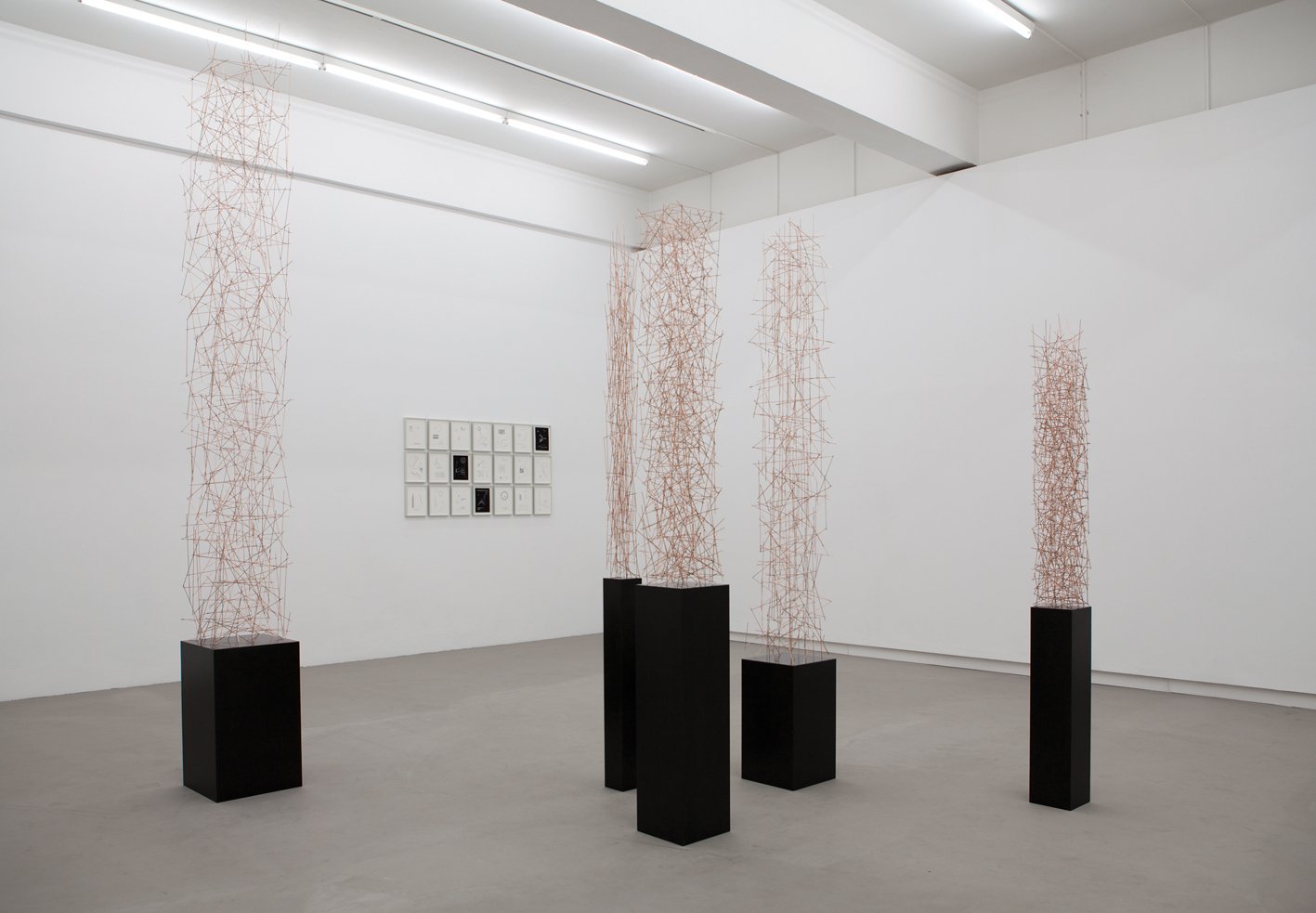
SCHLEICHER/LANGE BERLIN
TIMO NASSERI: CORE
27 April, 2013 - 1 June, 2013




-
SCHLEICHER/LANGE is pleased to present the solo exhibition by Timo Nasseri, for which the artist has conceived new drawings of his “O Time Thy Pyramids”-series and sculptures of his “Drill Core”-series.
Timo Nasseri’s works deal with the subject of legibility. By way of geometry and mathematically based approaches, he takes the beholder on a search and exploration of a decoding of his works. These works often maintain a metaphysical approach to infinity, represented visually and made available to sensory experience. The artist uses sources such as the notion of parallel universes from the world of quantum physics, texts by Jorge Luis Borges, or conceptions of geometry and visual culture from the Islamic context. The works in the series Drill-Cores consist of a sca ffold of delicate copper rods. Their interlocking structure appears crystalline, suggesting a deeper, fixed plan at the basis of their assembly. All the same, these drill cores seem to be chaotic in their grown structure, for they are selections from a larger context that is not yet visible or legible. In addition, they embody line become space in the form of the metal rods. Nasseri takes up the line itself as a basic element. In this way, the individual rods hold the potential to be extended infinitely. They visually represent the principle of infinity. In addition, the arrangement of the rods forms an optical rhythm and thus provides a surface disturbance. The work could be considered analogous to the “represented geometry” that exists in Arab culture. It is a representation of cosmic laws and not just ornamentation or technique, in contrast to the Western tradition of a “represented geometry,” which is used as a method of depicting images.
The small format drawings of the O Time Thy Pyramids series appear to be minute, analytic, objectively highly complex sketches from the realms of mathematics, astrophysics, or cartography.
The form of presentation and their labeling as books suggest that they are subject to a higher, inner logic. All the same, the beholder is unable to understand the overall context and the greater meaning, although familiar with this kind of drawing. Not only their external appearance generates the impression that there must be a deeper semantics behind these drawings, the fact that the individual symbols used (Arabic, Greek, and Latin numbers and letters, mathematical signs, etc.) are legible also contributes to this. The beholder is subject to an illusion on the intellectual level and attempts to find the “code” and to decipher it. Yet it remains questionable whether the beholder can ultimately decode these microcosms, which recall treasure maps or secret formulas. Timo Nasseri seems primarily interesting in raising questions and the notion of exploration.
Yet if the drawing pads from O Time Thy Pyramids are combined with the notion of parallel universes from quantum physics, this reveals an unsuspected potential. They contain the possibility that in a parallel existing world they could explain everything, and we are just not in the position of understanding them, just like a foreign language that we can identify as such and where we can perceive individual elements as separate words, yet their semantic meaning remains closed to us, although it goes without question that the foreign words must have a meaning. This again forms a reference to the Islamic tradition, where reading, seeing, and perception are much more linked to one another than in the Western context. The mathematician Alhazen (965–1040) suggests that decoding geometric figures should take place in a stepwise motion similar to writing.
A dffierent key source is Jorge Luis Borges “The Library of Babel” (1941), in which cacophonies of letters and words emerge from any possible combination, stored in an endless library. This means that they simultaneously represent illegible knowledge and yet contain everything: every sentence, every book ever written and that ever would be written, is concealed in the endless combination of these letters. Nasseri also refers to this in his drawings, bringing the power of human imagination to its limits.